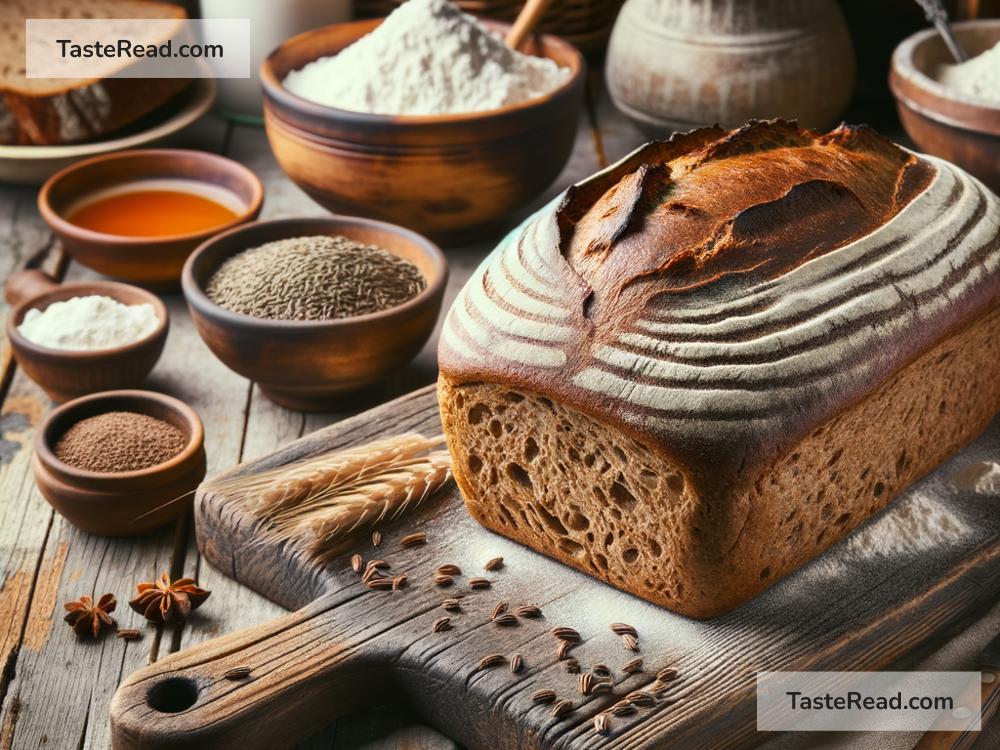How to Make Homemade Rye Bread: A Simple Guide
Making homemade rye bread is a fun and rewarding project for anyone who enjoys baking or wants to try something new! Rye bread has a hearty flavor and a dense texture that pairs perfectly with soups, sandwiches, or just a spread of butter. If you’ve never made your own bread, don’t worry—this guide will walk you through the process step by step and keep things simple.
Whether you’re a complete beginner or just looking for a new recipe, this blog will teach you how to make delicious rye bread in your own kitchen.
Why Rye Bread?
Rye bread stands out because of its rich, earthy taste and nutritional value. Rye flour has more fiber and fewer carbohydrates than regular white flour, making it a healthier option. It’s also traditionally used in many cuisines, from Scandinavian and Eastern European to German recipes. Making rye bread at home lets you control the ingredients, ditch preservatives, and create something wholesome and fresh.
Ingredients You’ll Need
The ingredients for homemade rye bread are simple and likely easy to find. Here’s what you’ll need:
- 2 cups rye flour (you can find this at health food stores or online)
- 2 cups all-purpose flour (to help create a lighter texture)
- 1 packet of instant yeast (or 2 ¼ teaspoons)
- 1 ½ teaspoons salt
- 1 tablespoon sugar (optional, for a hint of sweetness)
- 1 cup warm water (not too hot—aim for lukewarm)
- ½ cup milk (you can substitute with water or non-dairy milk, depending on preference)
- 2 tablespoons olive oil (or melted butter)
Optional:
– Caraway seeds (1 tablespoon for added flavor, commonly used in rye bread)
Tools You’ll Need
For baking rye bread, you’ll need:
- A large mixing bowl
- A wooden spoon or spatula
- Measuring cups and spoons
- A clean kitchen counter (or cutting board) for kneading
- A baking sheet or loaf pan
- A clean kitchen towel
- An oven
Step-by-Step Instructions
1. Prepare the Dough
Start by mixing your dry ingredients. In a large mixing bowl, combine the rye flour, all-purpose flour, salt, sugar, and instant yeast. If you’re using caraway seeds, add them now.
In a separate smaller bowl, mix the warm water, milk, and olive oil. Slowly pour this liquid mixture into the dry ingredients while stirring with a spoon. Stir until it starts to form a dough.
2. Knead the Dough
Once the dough begins to come together, place it on a clean counter or cutting board lightly dusted with flour. Knead the dough for about 8-10 minutes. To knead, use the heels of your hands to press and fold the dough over itself, then turn it slightly and repeat. The goal is to create a smooth, elastic dough.
While rye dough tends to be stickier than regular bread dough due to lower gluten, don’t worry! You can dust your hands lightly with flour to make it easier.
3. Let the Dough Rise
After kneading, shape the dough into a ball and place it in a lightly greased bowl. Cover the bowl with a clean towel or cling wrap and let it rise for about 1 ½ to 2 hours. It should roughly double in size.
Note: For a good rise, keep the bowl in a warm place, like near a sunny window or in an oven with the light on (make sure the oven isn’t heated!).
4. Shape the Bread
After the dough has risen, punch it down gently to release air bubbles. Then, transfer it to your counter and shape it into a loaf or a round. Place it on a greased baking sheet or into a greased loaf pan.
If you want to enhance the bread’s appearance, sprinkle a few caraway seeds on top or lightly score the surface with a knife.
5. Second Rise
Cover the shaped dough with a towel and let it rise again, this time for about 45 minutes to 1 hour. This second rise helps develop a better texture.
6. Bake the Bread
Preheat your oven to 375°F (190°C). Once the bread has finished its second rise, place it into the oven and bake for about 35-40 minutes.
To check if the bread is done, tap the bottom of the loaf—it should sound hollow. You can also use a thermometer; the internal temperature should be around 190°F (88°C).
7. Cool and Enjoy!
Once baked, remove the bread from the oven and place it on a cooling rack. Allow it to cool for at least 30 minutes before slicing. Cutting the bread too soon can make it gummy, so patience is key!
Tips for the Perfect Rye Bread
- Adjust the flour ratio: If you want denser bread with a stronger rye flavor, use more rye flour and less all-purpose flour. Keep in mind that extra rye will make the dough stickier.
- Experiment with seeds: Caraway, fennel, or sesame seeds can enhance your bread’s flavor.
- Add sweetness: If you prefer sweeter bread, add 1-2 tablespoons of honey or molasses during the liquid mixing step.
Final Thoughts
Making homemade rye bread is a simple yet satisfying process. You’ll not only enjoy the delicious taste but also the comforting feeling of creating something from scratch. This recipe is flexible, so feel free to tweak and experiment to suit your taste preferences.
Rye bread takes a little patience, but it’s worth the effort. So roll up your sleeves, grab your ingredients, and give this recipe a try. Your kitchen will smell amazing, and you’ll have a beautiful loaf of bread to share—or enjoy all for yourself!


